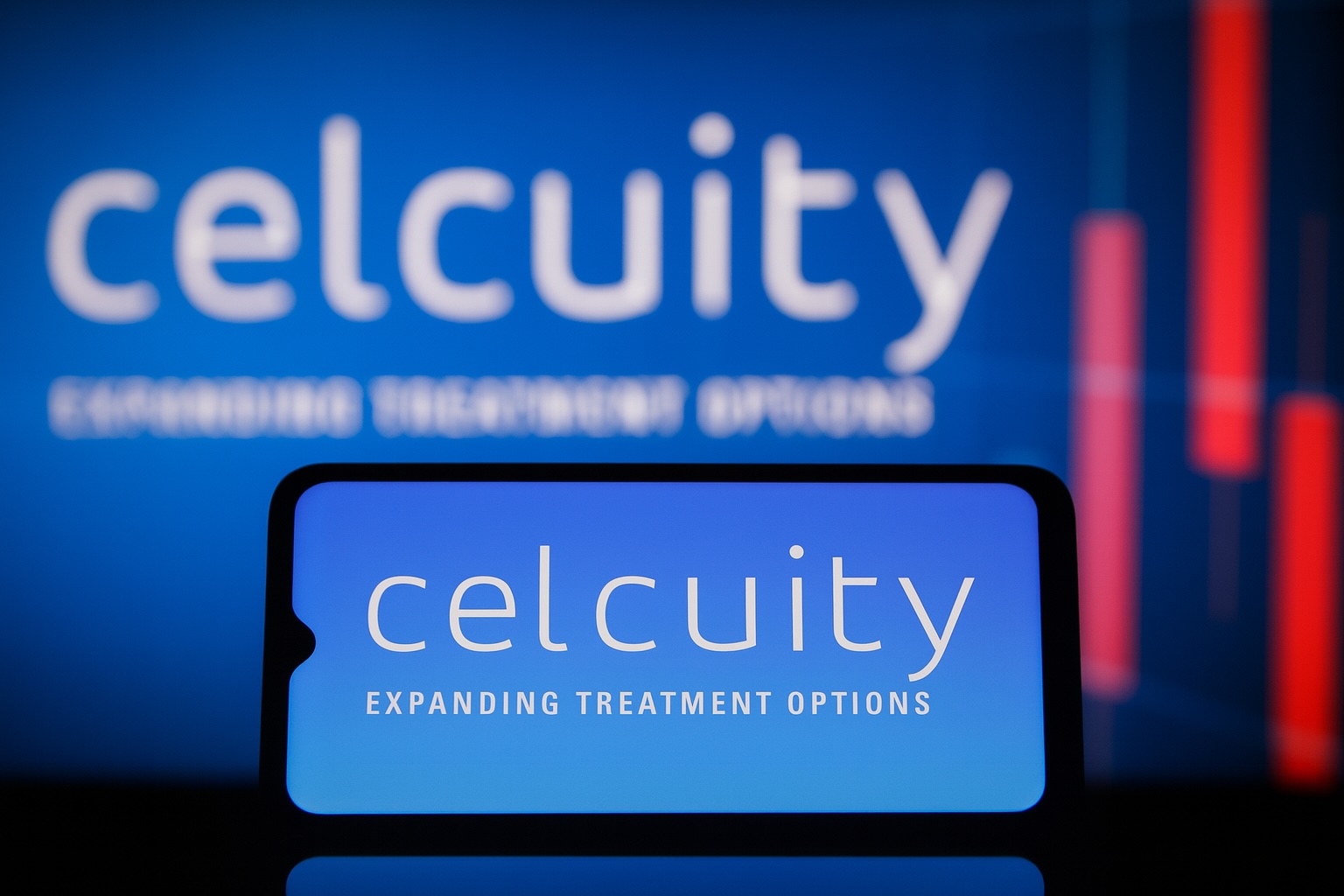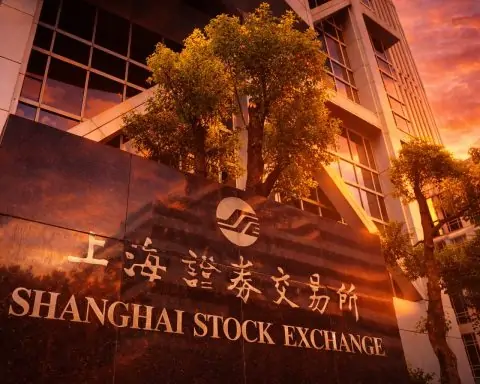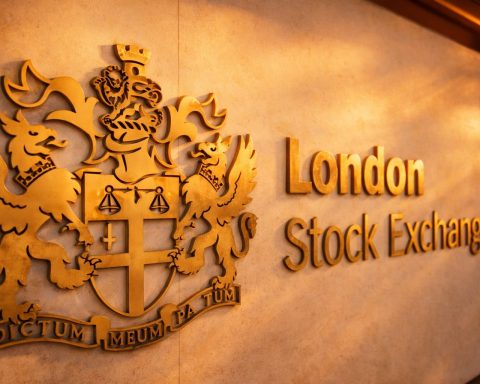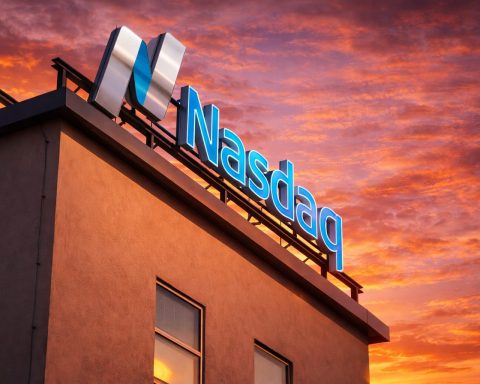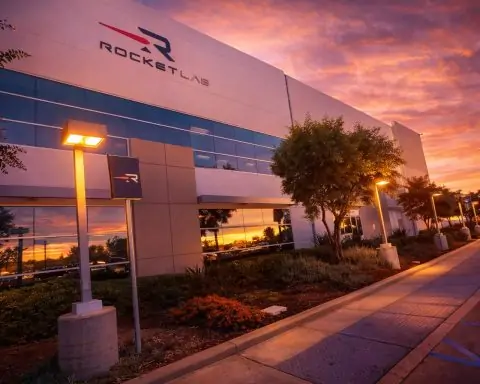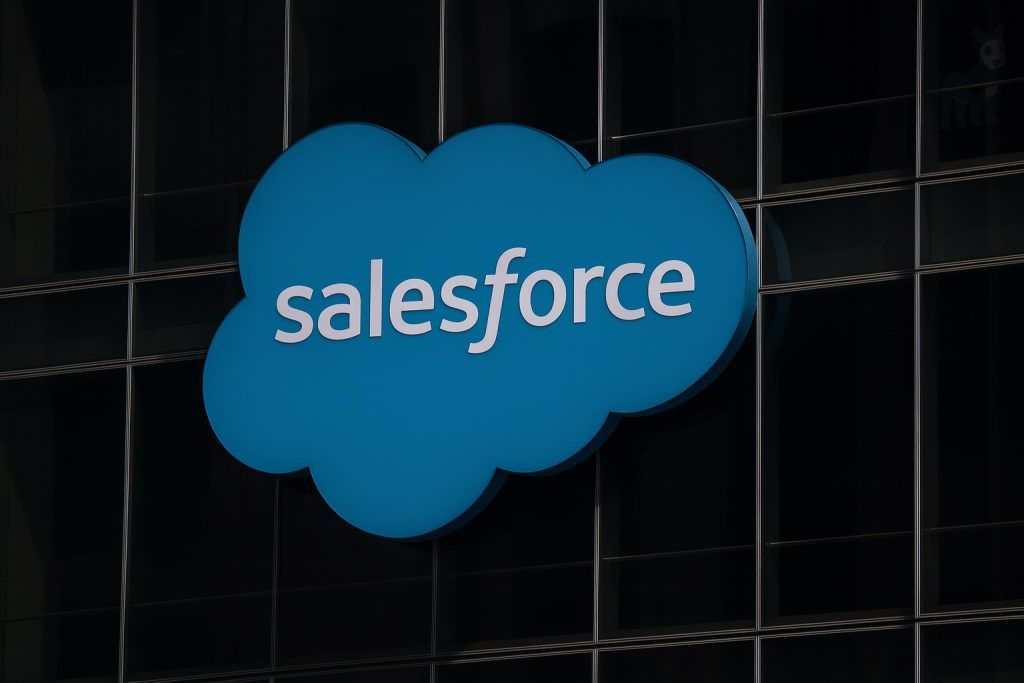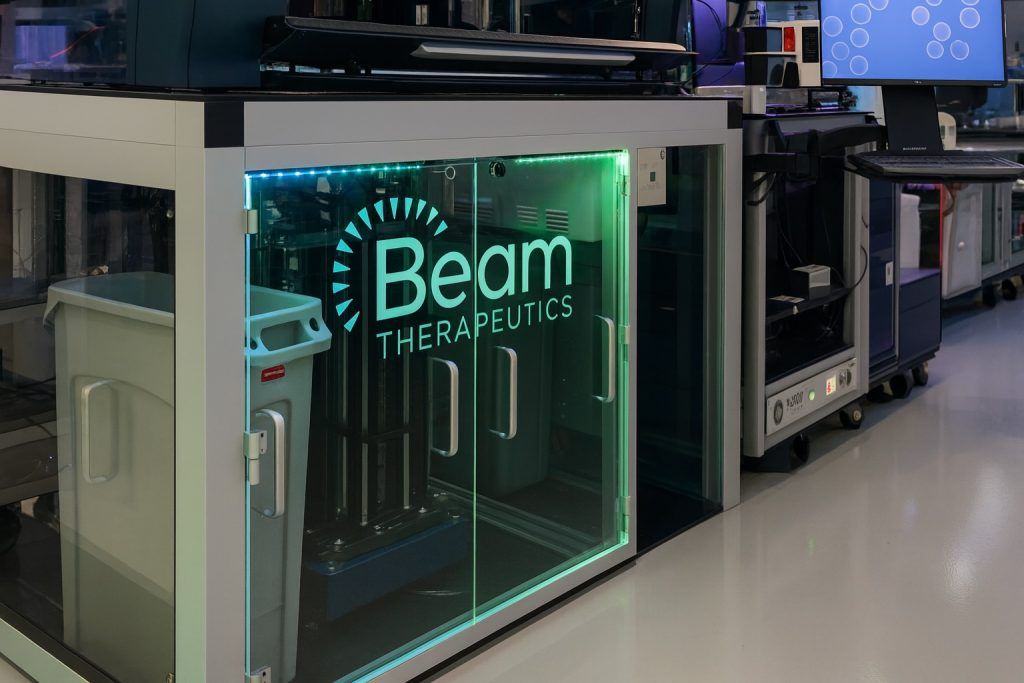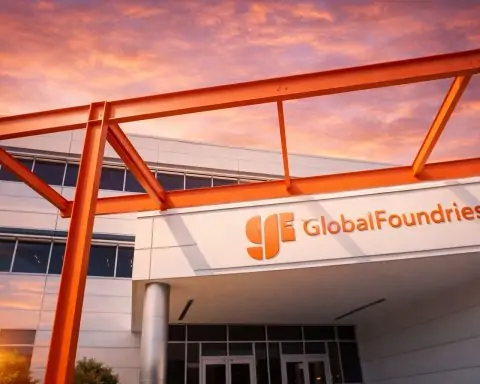- Shares Surge on Trial Success: Celcuity (NASDAQ: CELC) stock surged over 40% on Monday to an intraday all-time high near $80 after the company unveiled positive Phase 3 breast cancer trial data [1] [2].
- Breakthrough Efficacy: New results showed Celcuity’s drug gedatolisib (with fulvestrant ± palbociclib) cut the risk of disease progression or death by 76% in advanced HR+/HER2- breast cancer [3]. An ESMO 2025 discussant called the findings “potentially practice-changing” for patients [4].
- CEO: Trial Fully Enrolled, More Data Coming: Celcuity’s CEO confirmed the Phase 3 VIKTORIA-1 trial’s PIK3CA-mutant cohort is now “100% enrolled,” with final results expected by late Q1–Q2 2026 [5]. The PIK3CA wild-type cohort data presented at ESMO showed strong efficacy and manageable side effects (serious hyperglycemia in only ~9% of patients) [6].
- Analysts Boost Targets: Needham raised its price target from $70 to $95, praising the data as de-risking and “potentially practice changing” for gedatolisib [7]. CELC now trades above the consensus 12-month target (~$74.50) [8], and some analysts see upside into triple digits (targets as high as $110) [9].
- Biotech Context – High Hopes, High Risks: Even with this momentum (shares up 222% year-over-year) [10], Celcuity remains a clinical-stage biotech with no approved products and ongoing losses (–$1.04 EPS last quarter vs –$0.90 expected) [11]. Its dramatic rally far outpaces the broader biotech sector, reflecting investor optimism in Celcuity’s novel therapy balanced against typical drug development risks.
Stock Soars on Positive Trial News
Celcuity’s stock price skyrocketed on October 20, 2025 after the Minneapolis-based biotech reported game-changing clinical trial results. Shares jumped from around $52 to as high as $78–$81 intraday [12], an approximately 40–50% single-day leap, before settling near a record high close. This surge marked a new 52-week high of $81.56 [13] and lifted Celcuity’s market capitalization above $2.2 billion [14]. The stunning rally came on unusually heavy trading volume as investors rushed to buy shares, propelled by news from a major cancer conference.
The immediate catalyst was Celcuity’s Phase 3 VIKTORIA-1 trial data presented over the weekend at the European Society for Medical Oncology (ESMO) Congress. The company’s lead drug candidate, gedatolisib – a pan-PI3K/mTOR inhibitor licensed from Pfizer – is being tested in combination therapies for advanced hormone receptor-positive, HER2-negative breast cancer. Celcuity’s Monday morning press release and conference call highlighted remarkably strong efficacy results, which in turn ignited bullish sentiment around the stock.
“Celcuity’s share price hit an all-time high during mid-day trading on Monday,” MarketBeat noted, reaching roughly the $80 level (up from the prior $51.96 close) [15]. At that peak, the stock was up over +220% from one year ago [16] – a meteoric rise that underscores how a small biotech’s fortunes can be transformed by positive trial outcomes. For context, the Nasdaq Biotechnology Index’s performance over the same period was far more modest, making Celcuity a standout outperformer in the sector. However, after such a parabolic move, Celcuity now trades above many analyst price forecasts (more on that below), a sign that expectations have rapidly adjusted.
‘Practice-Changing’ Phase 3 Results Unveiled at ESMO
The core of Monday’s news was detailed Phase 3 clinical data showing that Celcuity’s drug regimen provided a dramatic benefit for women with advanced breast cancer. In patients with HR+/HER2- tumors without PIK3CA mutations (the “wild-type” cohort), adding gedatolisib (with fulvestrant ± CDK4/6 inhibitor palbociclib) led to significantly prolonged progression-free survival (PFS) – the length of time patients live without their cancer worsening. According to Celcuity, the gedatolisib combination “significantly improved median PFS compared to fulvestrant alone, reducing the risk of disease progression or death by 76%” [17]. In practical terms, that means patients on Celcuity’s therapy were four times less likely to see their cancer grow or die over the study period than those on the standard treatment (fulvestrant hormone therapy alone). Such a profound risk reduction is rarely seen in oncology trials and drew immediate attention from experts and investors alike.
At ESMO 2025 in Berlin, independent oncologists reviewing the data were impressed. Dr. Alessandra Gennari of the University of Eastern Piedmont, who served as the discussant for the trial, described both Celcuity’s results and a parallel Roche study as “two potentially practice-changing trials” in breast cancer [18]. This strong endorsement from a leading cancer specialist suggests gedatolisib could shift treatment standards if approved. The phrase “practice-changing” implies that the new regimen might offer enough benefit to become part of routine care, improving on existing therapies. Notably, Celcuity’s approach targets the PI3K pathway (a key cell growth signaling route) in a broader patient population. Current approved PI3K inhibitor therapy (Novartis’s alpelisib/Piqray) is only for patients with PIK3CA-mutated tumors and carries significant side effects like high blood sugar. Celcuity is aiming to treat both PIK3CA-mutant and wild-type patients with a potentially safer, more effective drug.
Detailed findings: In July, Celcuity had already announced topline success in the wild-type group (news that sent CELC stock up nearly 3× in one day [19]). The new data presented at ESMO fleshed out that story, confirming a median PFS benefit and also providing an early look at overall survival trends. While median PFS numbers were not explicitly stated in Monday’s press release, an analysis of Celcuity’s earlier Phase 1b study provides context. In a Phase 1b trial of gedatolisib, patients with PIK3CA-mutated cancers who got the same treatment regimen as VIKTORIA-1 enjoyed a median PFS of 19.7 months [20], versus historical medians around 7–11 months on the prior standard (fulvestrant with or without alpelisib) [21]. Even patients on a slightly different dosing schedule saw a 14.6 month median PFS [22]. These figures, while from a smaller Phase 1b sample, hint at the potential magnitude of benefit – substantially longer disease control – that gedatolisib could offer in Phase 3. If VIKTORIA-1’s final results in PIK3CA-mutant patients come anywhere close to those numbers, it would represent a major advancement for this difficult-to-treat population.
Crucially, Celcuity’s regimen also appears to have a more favorable safety profile than the existing PI3K inhibitor. Hyperglycemia (elevated blood sugar, a common toxic effect of PI3Kα inhibitors like alpelisib) was seen in only about 9% of patients on the gedatolisib combination, and mostly at mild grades [23]. This is a sharp improvement over alpelisib, which causes high blood sugar in a significant portion of patients (often requiring some to go on diabetes medications). “We’re very encouraged to see far fewer cases of severe hyperglycemia,” noted Dr. Gennari in her discussion, highlighting that this could make gedatolisib more tolerable for patients [24]. On the flip side, one side effect called stomatitis (mouth sores) did occur more frequently with gedatolisib (noted in ~69% of patients, mostly low-grade) [25]. Still, oncologists viewed the overall side effect profile as manageable, especially given the improved efficacy. Celcuity’s Chief Medical Officer Dr. Igor Gorbatchevsky echoed this optimism: “We are very encouraged by the median PFS of 14.6 months found in the [PIK3CA] mutant subgroup,” he said, adding that while the sample is small, the robust result gives confidence moving forward [26].
CEO: Pivotal Trial on Track, FDA Filing in Sight
Celcuity’s leadership is wasting no time capitalizing on the positive data. Brian Sullivan, Celcuity’s CEO and co-founder, emphasized that the Phase 3 VIKTORIA-1 trial is progressing well. “We are pleased to announce that the PIK3CA mutant cohort of the VIKTORIA-1 study is 100% enrolled,” Sullivan stated, meaning all patients needed for the second part of the trial have been recruited [27]. This is a critical milestone because it starts the clock for the final analysis in that cohort. Based on current projections of when enough patient outcomes will occur, Celcuity “expects to report topline data sometime in late Q1 2026 or during Q2 2026” for the PIK3CA-mutant group [28]. Those results will be the next major catalyst for the company.
If the mutant-cohort results are positive (and given the Phase 1 signals, many are optimistic they will be), Celcuity could be looking at a very compelling package of data to take to regulators. Sullivan hinted that regulatory filings are on the horizon once the full trial is complete [29]. Industry analysts speculate Celcuity might seek FDA approval for gedatolisib in late 2026, potentially pursuing a broad label covering HR+/HER2- advanced breast cancer patients both with and without PIK3CA mutations [30] [31]. That could position gedatolisib as a direct competitor to Novartis’s Piqray (currently approved only for the mutant subset) and as a new option for the larger wild-type patient population who currently have no PI3K-targeted therapy.
On Monday’s investor call, Celcuity’s management also highlighted other pipeline developments. The company reported encouraging Phase 1 results in prostate cancer earlier at ESMO, where gedatolisib combined with Bayer’s hormone therapy darolutamide achieved a 9.1-month median radiographic PFS in metastatic castration-resistant prostate cancer [32] [33]. This suggests gedatolisib’s PI3K/mTOR blockade might have utility beyond breast cancer, potentially in other hormone-driven tumors. While breast cancer remains the primary focus (and the furthest along, in Phase 3), Celcuity is quietly building a broader rationale for gedatolisib in oncology. Sullivan noted the company is “now enrolling patients in [an] updated Phase 1/1b” prostate trial to refine dosing, with an eye toward future Phase 2 studies [34].
Financially, Celcuity acknowledged it is still not profitable – as expected for a clinical-stage biotech with no marketed products. In its most recent quarterly report (Q2 2025), Celcuity posted a net loss of ($1.04) per share, missing the consensus EPS estimate of ($0.90) [35]. The company relies on investor funding and partnerships to finance its R&D; it ended the quarter with a solid cash position (bolstered by past equity raises and a licensing deal), which it believes is sufficient to reach key milestones. Cash burn will continue as Phase 3 wraps up and the company potentially prepares for a New Drug Application (NDA) submission. However, given the stock’s recent surge, Celcuity may now have the option to raise additional capital from a position of strength if needed (e.g. a secondary stock offering) – a common move for biotechs after positive data, though no such plans have been announced. Sullivan expressed confidence that Celcuity is “sufficiently capitalized” for now to advance gedatolisib’s development, pointing out that they even terminated an equity financing facility earlier this month to avoid unnecessary dilution [36].
Wall Street Analysts See Big Upside – and Big Expectations
The string of clinical wins has rapidly shifted sentiment on Wall Street in favor of Celcuity. Prior to the ESMO data, analysts already viewed CELC as an emerging biotech to watch, but many had tempered expectations. As of late summer, the average 12-month price target was around $56–$75 per share [37] [38], and the stock had mostly traded in the $20–$50 range. Now, with the stock breaking out above $80, those targets are being re-evaluated.
Several analysts quickly updated their models after the weekend’s news. Notably, Needham & Co. – one of the first firms to cover Celcuity – came out bullish. Needham raised its price target to $95 (from $70) while maintaining a “Buy” rating [39]. The firm said the updated Phase 3 results further “de-risk” gedatolisib’s prospects and could be “practice changing,” effectively reinforcing the drug’s potential to become a standard therapy [40]. Needham’s analysts also pointed to external context improving Celcuity’s odds: for example, Roche’s competing oral SERD drug giredestrant recently failed to show a PFS benefit in certain breast cancer patients (ESR1 wild-type subgroup), which “removes an overhang” that had loomed over Celcuity [41]. In other words, one potential rival fell short, giving gedatolisib a clearer run in the HR+/HER2- breast cancer space if approved.
Other research shops are similarly upbeat. HC Wainwright in a recent note boosted its target from $50 to $66 and reiterated a Buy rating (that call came even before ESMO, indicating further upside revisions may follow) [42]. Guggenheim and Stifel have initiated coverage on Celcuity in past months with Buy ratings, and may update their targets given the superior data. Wall Street’s highest projections now extend into the triple digits – with some analysts modeling scenarios well above $100 per share over the next 12–18 months if gedatolisib continues on track [43]. Investing.com’s analysis noted that current published targets span roughly $65 to $110 at the extremes [44], reflecting a wide range of opinions on just how big Celcuity’s opportunity could be.
It’s worth noting there is still one outlier bearish view: MarketBeat’s survey shows 5 Buy ratings and 1 Sell rating on CELC [45]. The lone “Sell” likely comes from a more skeptical analyst concerned about valuation or risks. That person may view Celcuity’s $3+ billion market cap as stretched for a company with no revenue yet, or worry that upcoming Phase 3 data could disappoint. Nonetheless, the consensus rating is a “Moderate Buy/Strong Buy”, and that consensus is likely to tilt even more positive as fresh reports are published. Celcuity’s average price target (by MarketBeat’s data) was around $56.50 before ESMO [46], but clearly this lagged the latest developments. A Zacks/WSJ consensus now pegs the average closer to $74–$75 [47], which the stock has already exceeded. In such cases where a biotech blows past its price targets, analysts typically upgrade their targets to account for the new information – we are seeing that play out now.
Meanwhile, investor sentiment online and in the biotech community has turned exuberant. On stock discussion forums, CELC has been a trending ticker, with traders marveling at the rapid gains. Some early investors who bought in when Celcuity was a little-known micro-cap (the stock was under $10 as recently as mid-2024) have seen life-changing returns as it now trades in the $70s–$80s. Short sellers appear to have been caught off guard by the strength of the data; some likely scrambled to cover positions on Monday’s spike, which can further fuel a stock’s rise. The big question now is whether Celcuity can sustain this valuation through the next hurdles – namely delivering the PIK3CA-mutant cohort results and eventually gaining FDA approval. Analysts caution that biotech stocks often swing wildly on clinical and regulatory outcomes. Any hiccup in trial data or delays could temper enthusiasm just as quickly.
Broader Biotech Market Context
Celcuity’s story arrives during an eventful period for biotech, especially oncology-focused companies. The strong showing at ESMO puts Celcuity among a select group of biotechs that have catalytic data releases this year, and it highlights how critical major medical conferences can be for small-cap biotechs to gain visibility. Other cancer drug developers with positive trial readouts at ESMO 2025 also saw their stocks jump, though Celcuity’s ~40% single-day gain eclipsed most. By comparison, industry giant Roche – which presented results for its new SERD giredestrant in a similar breast cancer setting – saw a much more muted stock reaction, given its enormous market cap and a less clear outcome (Roche’s data showed some efficacy but left “questions on how regulators will assess” the drug [48]). This juxtaposition underscores a familiar dynamic: big pharma moves slowly on incremental news, whereas a small biotech like Celcuity can skyrocket on a breakthrough, as success could exponentially change its fortunes.
Investors are also comparing Celcuity to other recent breast cancer success stories. Just a few years ago, a promising therapy in the same HR+/HER2- space, elenestrant, failed its Phase 3 trial, dashing hopes for a new standard of care. Celcuity’s approach is different – targeting the PI3K pathway rather than hormone receptors – and the latest data renew optimism that innovation in this field can pay off. Should gedatolisib ultimately make it to market, Celcuity will go from having zero revenue to potentially tapping a multi-billion dollar global market. HR+/HER2- breast cancer is one of the most common breast cancer subtypes; analysts estimate the addressable market for second-line treatments (post-CDK4/6 inhibitor setting) could exceed $6–8 billion annually. Celcuity won’t be alone – aside from Roche’s SERD, other competitors (e.g. additional PI3K or AKT inhibitors in development) are vying for a share – but Celcuity’s head start with a successful Phase 3 puts it in a strong position.
Despite the excitement, seasoned market watchers urge caution. Biotech stocks are inherently volatile. Celcuity’s ability to secure FDA approval and then commercialize the drug (likely in partnership with a larger pharma company, given Celcuity’s size) will be the ultimate test. Until then, the stock’s swings may continue. It’s not uncommon for small biotechs to rise on hype and then pull back due to profit-taking or broader market jitters. For now, however, Celcuity’s momentum is a reminder of the huge rewards – and risks – in biotech investing. As one financial commentator wryly noted, “Celcuity is trading at $80+, topping the average analyst target of $74.50”, and when a stock blows past targets so quickly, “analysts can only scramble to catch up” [49].
Bottom Line: Celcuity Inc. has delivered a major clinical win that sent its stock into the stratosphere this week. The data suggest gedatolisib could become a new cornerstone therapy for certain breast cancer patients, potentially improving outcomes and filling an unmet need. Executives are confident, experts are intrigued, and analysts are raising their forecasts. Still, significant steps remain – additional trial results, regulatory review, and commercialization – before Celcuity’s vision is fully realized. For public investors, CELC has suddenly become one of 2025’s most interesting biotech stories, embodying both the promise of cutting-edge cancer research and the dramatic market reactions that follow. All eyes will be on this company in the coming months as it attempts to turn Monday’s market debut of its breakthrough into long-term success for patients and shareholders alike.
Sources: Celcuity press releases and ESMO presentation data [50] [51]; STAT News and OncologyPipeline ESMO coverage [52] [53]; Investing.com report [54] [55]; MarketBeat and TS² financial insights [56] [57]; TipRanks/TheFly analyst commentary [58].
References
1. www.marketbeat.com, 2. www.investing.com, 3. www.investing.com, 4. www.statnews.com, 5. www.biospace.com, 6. www.globenewswire.com, 7. www.tipranks.com, 8. ts2.tech, 9. www.investing.com, 10. www.investing.com, 11. www.marketbeat.com, 12. www.marketbeat.com, 13. www.marketbeat.com, 14. www.investing.com, 15. www.marketbeat.com, 16. www.investing.com, 17. www.investing.com, 18. www.statnews.com, 19. www.oncologypipeline.com, 20. www.oncologypipeline.com, 21. www.oncologypipeline.com, 22. www.oncologypipeline.com, 23. www.globenewswire.com, 24. www.oncologypipeline.com, 25. www.oncologypipeline.com, 26. www.biospace.com, 27. www.biospace.com, 28. www.biospace.com, 29. www.oncologypipeline.com, 30. www.oncologypipeline.com, 31. www.oncologypipeline.com, 32. www.globenewswire.com, 33. www.globenewswire.com, 34. www.globenewswire.com, 35. www.marketbeat.com, 36. ts2.tech, 37. www.marketbeat.com, 38. ts2.tech, 39. www.tipranks.com, 40. www.tipranks.com, 41. www.tipranks.com, 42. www.zacks.com, 43. www.investing.com, 44. www.investing.com, 45. www.marketbeat.com, 46. www.marketbeat.com, 47. ts2.tech, 48. www.statnews.com, 49. ts2.tech, 50. www.biospace.com, 51. www.globenewswire.com, 52. www.statnews.com, 53. www.oncologypipeline.com, 54. www.investing.com, 55. www.investing.com, 56. www.marketbeat.com, 57. ts2.tech, 58. www.tipranks.com
